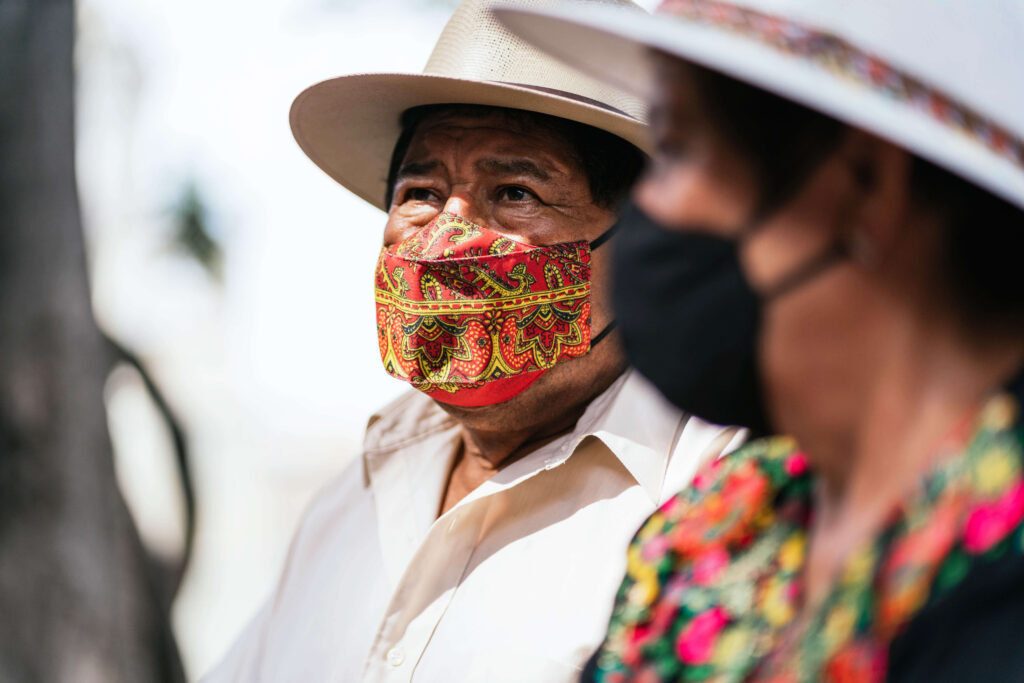
Topics
COVID-19 has had outsized impact on global poverty, especially in Latin America where the shockwave from the pandemic generated major headwinds for the inclusive finance sector. How have the sector and its clients navigated the storm? What lessons can we draw from how inclusive finance providers, such as microfinance institutions, managed to maintain sustainability and foster resilience among their clients? How different among global regions have responses, impacts, and future focal challenges been, and why?
These were among the questions for about two dozen leaders of microfinance organizations, impact investors, and analysts from around the world who convened recently at a workshop hosted by Lehigh University’s Martindale Center to share views on how financial inclusion interacted with the socio-economic crises of the pandemic. The event built on the success of a previous similar workshop that resulted in the publication of The Future of Microfinance by Brookings Institution Press in 2020.
Focus, Focus, Focus on Clients and Staff
A major part of the Lehigh workshop discussion, led by CEOs of three leading Latin American microfinance institutions (MFIs), focused on experiences of institutions in Latin America and the Caribbean (LAC). One of the central areas of agreement about lessons learned was that client-centricity was key to minimizing the impact of the COVID-19 crisis on Latin American MFIs. Lockdowns throughout the region were quite strict and prolonged (on average six-plus months). Not only were the respective economies badly hurt—with GNP drops of about 7 percent to 9 percent according to the OECD—but also, probably more importantly, target clientele, who live day to day and need to go out to generate income, were particularly hard hit.
Client-centricity was key to minimizing the impact of the COVID-19 crisis on Latin American MFIs.
Being client-centric during the worst of the pandemic meant being constantly in touch with clients and being flexible and able to adapt to changing needs. Further, participating leaders of Latin American MFIs uniformly agreed that beyond considering the needs of an organization’s external clients it was also equally important for MFIs to listen and adapt, internally, to the needs of their employees. Only through ensuring staff’s commitment and loyalty have MFIs in the LAC region been able to maintain adequate communication and contact with their clients through the pandemic. Given how the prevailing “high-touch” MFI operating methodologies heavily rely on proximity and constant follow-up with clients, regular and transparent client communications became critical under the crisis’ rapidly evolving enabling environments.
Workshop participants stressed the importance of MFIs remaining flexible and quickly reacting to changing circumstances, such as providing client-specific, case-by-case restructuring and/or increases in loan sizes, as well as seeking cost reduction through improved efficiency and productivity, notably increasing the use of digital tools wherever feasible. On the flip side, practices that practitioners agreed did not work well included: blanket or indiscriminate across-the-board restructuring and refinancing; generalized increases in loan amounts; and indiscriminate down-to-the-bone cost cutting.
Crisis Management by MFIs and Clients
It’s important to highlight factors that normally would have had a material negative impact on MFIs and their clients but, in the case of LAC, ended up having minimal effect. Specifically: liquidity. Because of people’s inability to leave their dwellings due to strict lockdowns, coupled with government sanctioned system-wide loan repayment moratoriums, microentrepreneurs were for the most part not repaying their loans. Under those circumstances, one might have anticipated that MFIs’ liquidity would rapidly deteriorate and reach crisis levels. However, MFIs largely managed to avoid liquidity issues through a combination of extended grace periods implemented by host country governments and international funders, coupled with enhanced liquidity management by the MFIs. As severe and long-lasting as the COVID crisis has been, most well-managed MFIs appear to have survived relatively well.
For the inclusive finance sector’s target clients, the pandemic was, after all, not “the crisis” but rather “one more crisis.”
Beyond palliative measures implemented by governments and funders, and the rapid and seemingly appropriate responses of most organizations, it is important to note just how resilient microentrepreneurs are. Beyond the imperative need to “sink-or-swim” for those that live so precariously—and without taking away from how severe the COVID crisis was for low-income people across the globe—Lehigh workshop participants noted that microentrepreneurs, in fact, are always operating under duress. Workshop participants agreed that the target population lives in an essentially permanent state of crisis. Indeed, in most of the corresponding enabling environments, MFI clients deal daily with everchanging rules of the game, shifting regulations and market dynamics, violence and insecurity, and nature-related external shocks (such as, but not limited to, hurricanes, earthquakes, floods, droughts) that are being exacerbated by climate change. Thus, for the inclusive finance sector’s target clients, the pandemic was, after all, not “the crisis” but rather “one more crisis.”
Three Rs of Digitalization
The need for and convenience of having available digital mechanisms through which MFIs could interact with their clients became very evident during the pandemic. Accordingly, digitalization efforts received a renewed push throughout the LAC region. Overall, organizations that were ahead-of-the-curve in the digitalization process before the pandemic were able to better cope with the new challenges of interacting virtually with clients. Nevertheless, participants at the Lehigh workshop emphasized that for MFIs digitalization is not a silver bullet that will solve all their problems but is rather one more tool for which levels and speed of implementation need to be clearly defined based on an MFI’s resources.
MFIs digitalization is not a silver bullet that will solve all their problems but is rather one more tool for which levels and speed of implementation need to be clearly defined.
Specifically, any digitalization plan should take into account the three Rs: a) Reason—why is more digitalization needed (e.g., reduce costs, improve client services)?; b) Resources—what is available to the MFI not only in terms of financial resources to cover implementation expenses, but also in terms of human resources, local telecom infrastructure, etc.?; and c) Return—what are the expected returns from implementing the process? Further, given that only what is measured gets done, it is important to clearly define how each of the relevant variables (better service, lower costs, etc.) will get measured, reported, and assessed.
The Latin American MFIs participating at the Lehigh workshop prioritized distribution processes (e.g., data collection, disbursements, collections) over analytics, algorithms, or artificial intelligence (AI). Participating practitioners frequently mentioned current limitations of AI as an ongoing challenge; specifically that low levels of existing actuarial data limit the ability to build AI tools. Moreover, compounding that existing barrier, in the wake of the crisis, most pre-pandemic data trends became less dependable as elements to predict future behavior.
Focus Forward
The workshop highlighted several areas for the inclusive finance sector to focus on moving forward:
1. Digitalization
This is an area most providers of inclusive financial services need to work on and for which appropriate guidance and capacity building support at the industry level could have substantial benefits. (For more workshop takeaways on digitalization, see previous blog in this CFI series.)
2. Consolidation
Expectations had been that a severe crisis, such as the one associated with the COVID pandemic, would precipitate industry consolidation. Somewhat surprisingly, it appears that overall, this has not been the case. While it might be too early to come to definitive conclusions— circumstances could still change and regional or national variations may emerge—so far, the extreme duress of smaller and weaker MFIs that could have triggered consolidation processes has been less than anticipated. At most, the crisis might have accelerated consolidation trends in a small subset of places where such developments were already underway.
3. Governance
The MFIs that have been the most severely affected by the COVID crisis have common management and governance weaknesses. Thus, the topic of building strong governance practices surfaced as a key area where leaders and proponents of the financial inclusion sector would be well advised to concentrate their efforts.
4. Subsidies
The noticeable trend among international donors and aid agencies to diminish subsidized support for microfinance is probably appropriate given that, overall, the industry seems to have matured and continues to evolve in healthy directions in terms of financial sustainability and social impact. Moving forward, the substantial support provided to the microfinance industry—including technical assistance, direct funding, and soft resources—might not be as transformational as it was in the past. Nevertheless, while the sector’s self-sufficient maturity might be true overall, there are specific instances in which support is still justified, for example, support for remote and rural inclusion efforts, digitalization guidance and capacity building, governance, and specific focus on regions or countries affected by climate change or other exogenous shocks.
Participants of the Lehigh University workshop included Mercedes Canalda, CEO, Banco Adopem, Dominican Republic, Edgardo Perez, CEO, Fundación Génesis Empresarial, Guatemala, and Ralph Guerra, CEO, Compartamos Financiera, Peru. This note represents the author’s views, not necessarily those of other participants.










